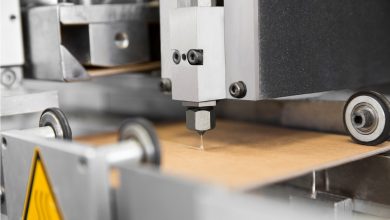Silicones: making the EU’s digital innovation agenda a reality

There are two types of people in the world: those who take technology for granted, and those who are amazed at how far we’ve come in recent years. For Pierre Germain, CES Secretary General, the pace at which digital innovation has progressed over the last decade is simply mind-blowing
by Pierre Germain (*)
(*) CES Secretary General, +32 (0)2 676 73 77 or pge@cefic.be
With a 12% growth rate year-on-year in Europe alone, the digital economy is shaking up all aspects of our lives – from telecoms and banking to healthcare and cars. Our devices are ever-smaller, sleeker and faster, and technologies such as batteries, LEDs and semi-conductors are revolutionising sectors which we had never even envisaged them for. We live in an era of possibility.
Poland is well on track to becoming a hotspot for technological development. Through initiatives such as the Google Campus and Hive53 in Warsaw, and a growing market for venture capitalists (e.g. InCredibles), the digital economy is booming. This fits well within the EU agenda, where a new Industrial Policy Strategy, R&D funding programmes such as Horizon 2020, and myriad other initiatives are emerging to get the EU’s innovation ball rolling. Poland also directly benefits from EU funding via activities such as TEAM-TECH, through grants provided to researchers working on projects that bring economically important technological or manufacturing innovations.
Both Europe’s and Poland’s continued participation in the global technology race requires a solid and sustainable local production chain. A great idea cannot materialise without great execution. Working ‘behind-the-scenes’ to deliver innovation to markets, silicones have provided solutions to some of the biggest challenges faced by innovative technologies: How do you prevent overheating? How can we protect electronic components from corrosion? How can we shield batteries from the risk of electric surges or fires – and how can we regulate the temperature of batteries as we move to large-scale applications, such as electric vehicles?
A unique set of characteristics has enabled silicones since the 1960s to fix many technical headaches, spurring innovation forward.
Silicones have excellent properties for innovation
Silicones are stable over a wide temperature range, and they can effectively dissipate heat in increasingly compact and powerful components, making electrical products more reliable – a fundamental prerequisite for electronic chips and semi-conductors in industrial motors, locomotives and power supplies that require high voltage switches. Silicones can withstand this high voltage and can provide excellent electrical insulation– which is essential for semiconductors, in cell phones, base station satellites and radars, or for protecting optical fibres in the telecoms sector.
Electronic modules are getting smaller, but data volumes and the speed with which data is processed have increased – heat dissipation provided by silicones is an essential feature to achieve this without risking overheating, or worse, fire.
Silicones form airtight seals which protect equipment from dust and other contaminants, and are resistant to UV, ozone moisture, and shocks, providing improved light performance and extended product life, and protection from the elements and harsh environmental conditions.
Taking semiconductors to the next level
Semiconductors are a crucial element (some even say it is the backbone) of the digital innovation transformation. They allow, and at the same time resist, the flow of electricity, making them adaptable to controls. The electric resistance of semiconductors varies with the amount of charge applied to them. This adaptability sets them apart from very strong conductors such as copper, or very weak conductors such as glass. Because of this ability, and because they can be made extremely small, semiconductors are the heart of all modern electronic devices – they are in your phone, your computer, your TV, your city’s traffic system, and much more.
Because semiconductors are generally small (and getting smaller as our devices shrink), they can be quite fragile. It is therefore important that they receive adequate protection – without compromising on weight or aesthetics. Silicones provide efficient protection with only a small amount of material. They seal, bond, and encapsulate semiconductors, making sure that they are safeguarded against external impacts. Silicones safely separate the elements that need to be separated, and bond those that need to be bound. In fact semiconductors, as well as the many other precious materials inside the myriad devices that modern life so depends on, rely on silicones.
The LED example
Light Emitting Diodes (LEDs) are a type of semiconductors – and they have revolutionised the way we use light. Thanks to LEDs, our lighting sources last longer, light up more quickly, come in more shades of colour, and most importantly – save a lot of energy. LEDs also adapt well to digital controls, and may even be key to powering the shift to “smart” devices and the Internet of Things (IoT).
LEDs could not have had their current form – and certainly would not have been as widespread – without silicones. In LED devices, clear silicone gels and elastomers are used to encapsulate individual diodes. They provide improved light performance, extended product life and environmental protection. These gels and elastomers are non-yellowing, help provide UV resistance, temperature resistance, low impurity levels and optical clarity.
LEDs containing silicones are used in all imaginable lighting applications ranging from domestic lighting, to aviation display lighting, to industrial machine lighting, to rail and road signalling systems to stage and theatre lighting.
The battery example – delivering the e-mobility revolution
At the crossroads between technology and sustainability, electric vehicles have become key strategic investments for Governments across Europe. It is no different for Poland. A number of upcoming initiatives are planned in 2018 to support the advent of this technology, such as a special fund for zero emission transportation that operates from this year onwards (supporting those that want to buy a zero-emission car, and the e-mobility package which Poland is aiming to finalise this year).
Silicones protect batteries from heat and cold through the formation of an insulating thermal shield around the battery. They also insulate batteries and protect them from electric surges or battery fires. In electric cars, they shield batteries from moisture and temperature fluctuations.
And the benefits of silicones for vehicles also enable us to look to a digital future for transport: silicones give electronics the ability to absorb vibration and shock, an essential feature for safety in transport – particularly as we increasingly move towards autonomous vehicles, which rely on very powerful, small electronic modules that generate a lot of heat.
Protecting your device and your skin
Perhaps more visible to consumers and to the naked eye are the many uses that protect the outside of electronic devices. Silicones are used to encase wearable electronics, such as smart watches, ear phones and fitness trackers, providing safe skin contact, resistance to abrasion and UV radiation, sweat and sebum. Flexible and comfortable silicone covers protect phones, keyboards and cables. Silicones are also used to coat smart phones and wearable devices. This coating forms a durable and easy to clean film that provides resistance to water, oil, stains, abrasion and shock.
Contributing to sustainability
Importantly, silicones also significantly contribute to sustainable products: a study by research firm Denkstatt found that the use of silicones, siloxanes and silanes generates energy savings and greenhouse-gas emission reductions that outweigh the impacts of production and end-of-life disposal by a factor of 9. In addition, silicones contribute to product durability, enabling products that last longer.
Optical fibres are essential to data transfer/communication in harsh environment. They also help power renewable energy solutions to supply the increased electricity demands of the digital revolution in a sustainable way. Wind turbines need protection from harsh elements, and they get this from sealants and mouldings made tough and durable by their silicone ingredients. Inside the turbine, silicone lubricants and coatings damp vibrations in the rotating machinery and let it spin smoothly. These advances have enabled the construction of turbines with bigger blades which increase power output: on average units built in 2010 generated 40 times as much power as those made twenty years earlier. Silicones’ adhesive properties are also used to fix solar cells used to fix the cells in place. And optically transparent silicones are used to make the outside solar panelling because they resist both moisture and ultraviolet light.
In addition to their role in clean energy supply, and the myriad beneficial properties mentioned above, silicones have long helped cut energy demand.
This is why silicones are natural partners for digital technologies and innovation in Europe. Industry figures from 2015 reveal a total of 35,000 metric tons of silicone products were sold in Europe to the electronics market alone, with a value of €600 million, and the industry employs 1.7 million people across Europe in related sectors. As Poland and the EU raise the bar for home-grown technology, silicones continue to provide the support which will make innovation work, and work better.
To me, technological progress will always be astounding, for the simple fact that innovation tends to deliver the unthinkable. But with silicone technology, there’s a high chance that if someone has thought of it, it can become possible.










